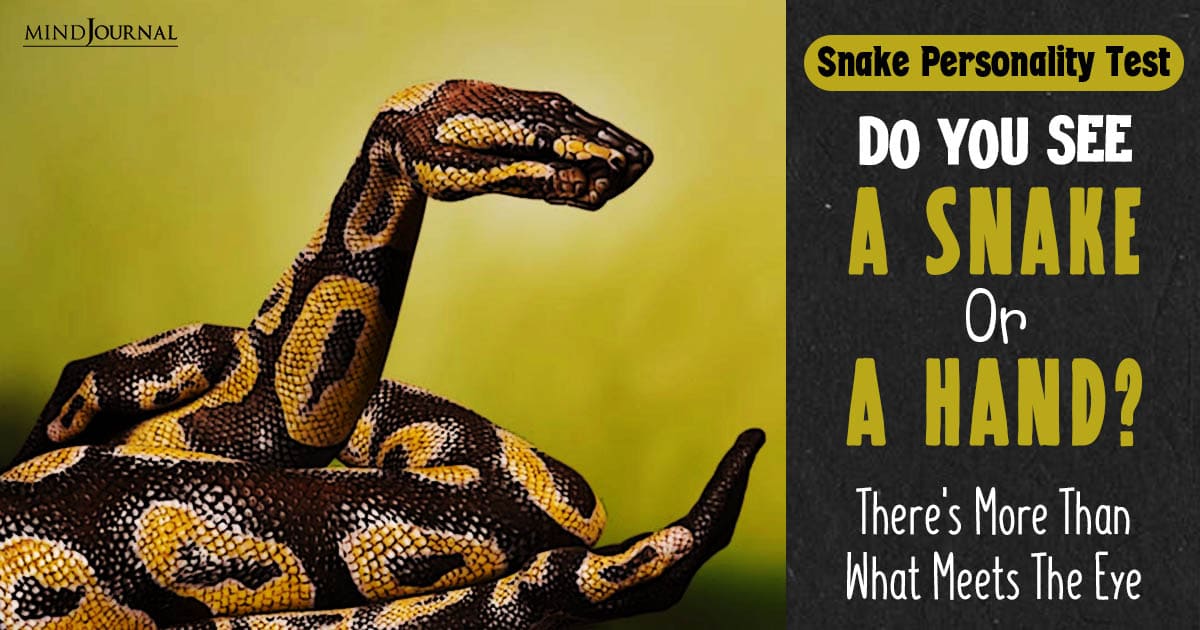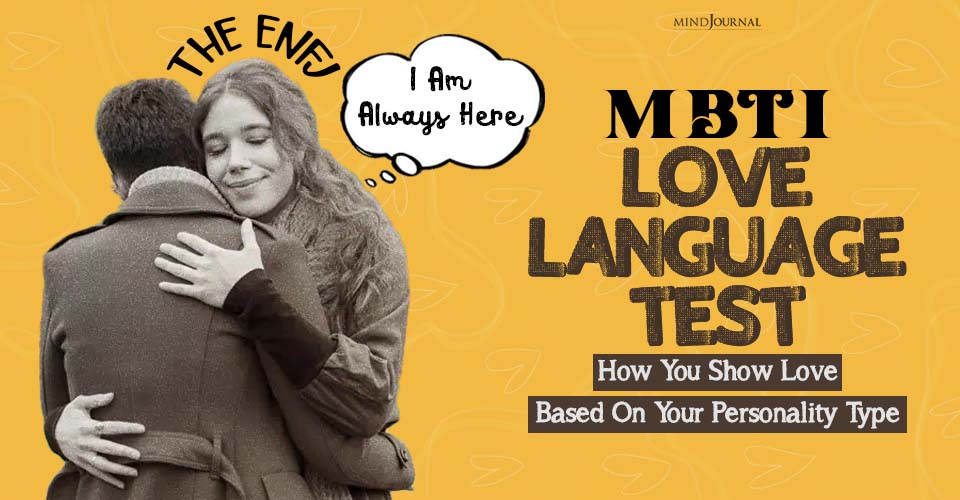Optical illusions have long captivated the human mind, intriguing us with their ability to deceive our senses and challenge our perception.
One such fascinating illusion is the “snake or hand” optical illusion, where a pattern resembling both a snake and a hand emerges, leaving viewers puzzled as to which object they perceive. Let’s find out what this snake personality test is all about.
Interestingly, your interpretations of this illusion can offer insights into your personality traits. Most people end up seeing a snake rather than a hand, and it’s only much later that they realize it’s actually a painted hand meant to deceive their perception.
However, what you see first is what matters when it comes to understanding your true personality in this snake personality quiz. So, do you see a snake or a hand? Let’s find out!

Related: Are You Left-Brained or Right-Brained? QUIZ
Snake Personality Test: Decoding the Snake or Hand Optical Illusion
1. Snake
If you saw the snake first in this snake optical illusion test, then it signifies traits associated with an impulsive leader. Are you an impulsive person with remarkable leadership qualities?
You exude confidence in your judgment, possess a quick wit, and inspire those around you. People look up to you for inspiration, advice, and wisdom, and you are treated with a lot of respect wherever you go. Your natural charisma draws people in, particularly due to your sharp and smart sense of humor.
However, you may also have a propensity for risk-taking and might not always provide comfort through your words and actions. Your impulsive nature can sometimes prove to be a bane for you and the people around you.
2. Hand
If you swiftly identified the hand within the snake optical illusion or snake optical illusion test, it indicates that you have strong and impressive analytical skills. You prioritize gathering information before making decisions, and you don’t really have an impulsive bone in your body.
When it comes to problem-solving, you prefer to plan out everything beforehand in an organized and well-thought-out manner rather than relying on impulsive instincts. You value knowledge and reasoned judgment, over brash, impulsive decisions.
However, these analytical traits may also be accompanied by a propensity for anxiety, as the weight of decision-making can sometimes prove to be overwhelming for you. Anxiety and worry end up making you feel like you’re always under pressure and you always have to prove your worth.
Conclusion
It is important to note that the results of this snake personality test are not fixed and may vary among individuals. Personality is complex and multifaceted, influenced by various factors beyond a single optical illusion.
Nonetheless, exploring these relationships can contribute to your broader understanding of how perception intertwines with personality.
This snake personality test or snake optical illusion serves as a fascinating tool for unveiling certain personality traits. Recognizing the hand immediately suggests strong analytical skills, a preference for information gathering, and a reliance on knowledge over instinct.
Related: Are You Competitive Or Brutally Honest? Optical Illusion Test Reveals Your Personality
While these traits may bring about anxiety, it’s crucial to remember that every human being’s personality is diverse and nuanced, and the results of this test should be taken as one piece of a larger puzzle.
Embracing the complexities of your personality can enhance your understanding of human psychology and perception.
So, what did you see first in this snake personality quiz? Do you see a snake or a hand? Let us know your thoughts in the comments down below!
Frequently Asked Questions (FAQs)
What is the most powerful optical illusion?
The Ames Room illusion, known for its mind-bending effects, distorts perspective and size perception, making people of different heights appear to be the same size and walk in impossible ways.
What is the trick behind optical illusions?
Optical illusions trick our brains by exploiting the ways our visual system processes and interprets information, often through the manipulation of perception, depth cues, and cognitive biases.
What are the 4 types of visual illusion?
The four types of visual illusions include literal illusions (misinterpretation of visual stimuli), physiological illusions (resulting from excessive stimulation of specific visual pathways), cognitive illusions (caused by perceptual biases and assumptions), and pathological illusions (occurring due to abnormal visual processing, often associated with medical conditions).
Do optical illusions work?
Yes, optical illusions are effective in manipulating our perception and creating visual phenomena that often defy our expectations, showcasing the remarkable ways our brains interpret and process visual information.










Leave a Reply